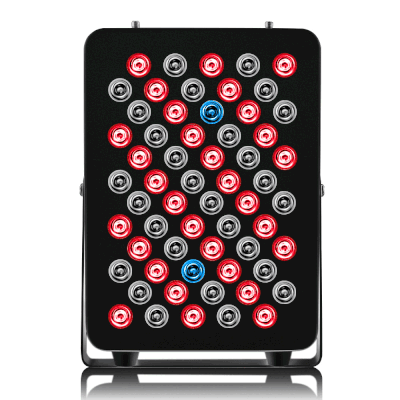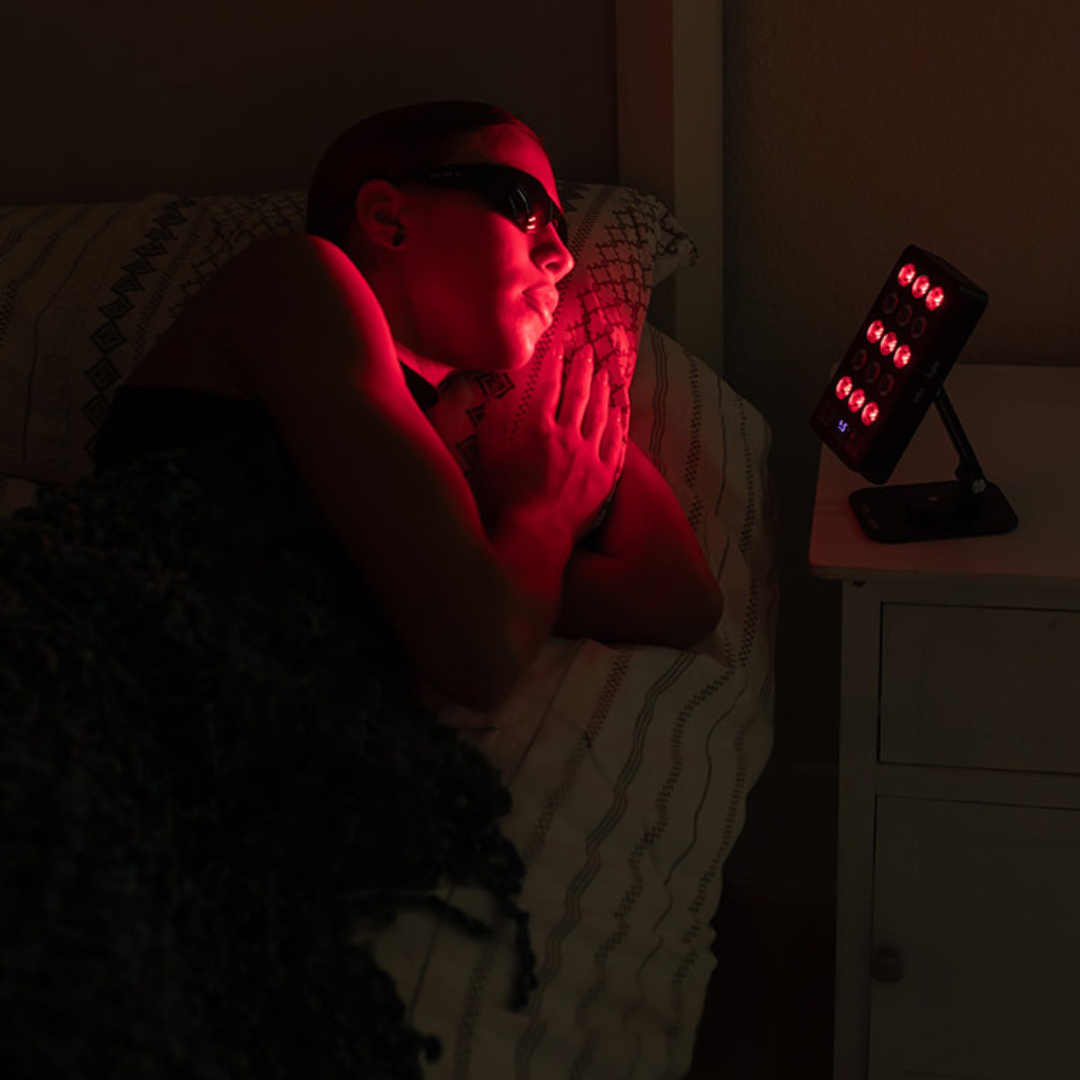![]() Free Shipping
Free Shipping ![]() Buy Now, Pay Later
Buy Now, Pay Later ![]() Eligible
Eligible
Red Light Therapy for Bladder Health: A Comprehensive Guide

If you suffer from chronic bladder conditions like Interstitial Cystitis (IC) or an overactive bladder (OAB), you know the relentless search for relief. From dietary changes to medications, the options can feel both overwhelming and insufficient. But what if a non-invasive, drug-free therapy could help calm the inflammation and pain?
Enter red light therapy (RLT), also known as photobiomodulation. This emerging treatment is gaining traction for its potential to address the root causes of bladder discomfort at a cellular level. This article will illuminate how red light therapy works for the bladder, the evidence behind it, and what you can expect.
What is Red Light Therapy?
Red light therapy is a therapeutic technique that uses low-wavelength red and near-infrared (NIR) light to penetrate the skin. Unlike UV light which can damage skin, this specific spectrum of light is safe and non-thermal.
The light energy is absorbed by the mitochondria, often called the “powerhouses” of our cells. This interaction stimulates a biochemical effect that enhances the mitochondria’s ability to produce cellular energy (adenosine triphosphate or ATP). Think of it as a “recharge” for your cells, enabling them to function more efficiently and repair themselves.
The Science of Light: How Does Red Light Therapy Help the Bladder?
The therapeutic benefits for the bladder stem from this fundamental boost in cellular energy. Here’s a breakdown of the key mechanisms:
- Reducing Inflammation: Chronic bladder conditions are often characterized by significant inflammation. RLT has been shown to suppress inflammatory cytokines and increase anti-inflammatory markers, directly calming the irritated bladder lining.
- Promoting Tissue Repair and Healing: By increasing blood circulation (vasodilation) and stimulating fibroblast production, RLT can aid in the repair of damaged tissues within the bladder wall.
- Alleviating Pain: The therapy can help modulate pain signals and reduce neuropathic pain, providing relief from the burning and discomfort associated with conditions like IC.
- Antioxidant Effects: RLT can reduce oxidative stress, a key player in cellular damage and chronic disease, helping to protect bladder cells.
Expert Insight: “Photobiomodulation represents a paradigm shift in managing chronic urological pain. By targeting the underlying inflammation and cellular dysfunction, it offers a tool that works in concert with the body’s own healing processes, rather than just masking symptoms.” – Hypothetical quote from a urology researcher.
Target Bladder Conditions: What Can RLT Address?
Research and clinical use suggest red light therapy may be beneficial for several common bladder ailments.
Interstitial Cystitis / Bladder Pain Syndrome (IC/BPS)
This is the most researched area for bladder RLT. IC/BPS involves chronic pain and pressure in the bladder. Studies have shown that applying red and NIR light to the suprapubic area (lower abdomen) can significantly reduce pain scores, decrease urinary frequency, and improve overall quality of life for IC patients.
Overactive Bladder (OAB)
For OAB, which is characterized by a sudden, uncontrollable urge to urinate, RLT may help by calming the detrusor muscle of the bladder. Reduced inflammation and improved nerve function can lead to better bladder control and fewer urgency episodes.
General Bladder Inflammation and Post-Surgical Recovery
RLT’s strong anti-inflammatory and healing properties make it a candidate for managing general cystitis and aiding recovery after bladder-related surgeries, potentially reducing pain and speeding up tissue repair.
Red Light Therapy vs. Conventional Bladder Treatments
How does RLT stack up against traditional approaches? The table below provides a comparative overview.
| Feature | Red Light Therapy | Conventional Medications (e.g., Anticholinergics, Amitriptyline) | Instillations (Bladder Washes) |
|---|---|---|---|
| Mechanism | Cellular energy & repair | Blocks nerve signals / alters brain chemistry | Directly coats/blocks bladder lining |
| Primary Action | Reduces inflammation & promotes healing | Symptom management | Symptom management |
| Invasiveness | Non-invasive, external | Systemic (pills) | Invasive (catheter required) |
| Side Effects | Very few, generally safe | Dry mouth, constipation, drowsiness | Discomfort, UTI risk, burning |
| Goal | Address root cause & symptoms | Manage symptoms | Manage symptoms |
How to Use Red Light Therapy for Your Bladder
VELLGUS Elite V2
THE #1 RATED RED LIGHT DEVICE
Professional vs. At-Home Devices
- Professional Treatments: Performed in a clinic, these sessions use high-powered devices. A typical protocol might involve 2-3 sessions per week for several weeks, with each session lasting 10-20 minutes.
- At-Home Devices: For convenience and long-term management, many turn to high-quality at-home red light therapy panels or wearable devices. These are less powerful but can be used more frequently.
A Typical At-Home Protocol
- Device Placement: Position the light panel or device directly over your lower abdomen, just above the pubic bone.
- Session Duration: Start with 10-15 minutes per session.
- Frequency: Use it daily or every other day for consistency.
- Consistency is Key: Like any therapy, results are cumulative. It may take 4-8 weeks of consistent use to notice significant improvements.
User Experience: “After struggling with IC for years, incorporating a home red light panel into my routine was a game-changer. Within a few weeks, the constant ‘background’ pain had diminished, and I was getting up less at night. It’s not a magic cure, but it’s the most natural relief I’ve found.” – Hypothetical user testimonial.
Safety and Considerations
Red light therapy is considered very safe with almost no known side effects. It is non-toxic, non-invasive, and does not generate heat that could damage tissue.
However, it is crucial to:
- Consult Your Doctor: Always speak with your urologist or healthcare provider before starting any new treatment.
- Manage Expectations: RLT is often a complementary therapy, not a standalone cure. It works best as part of a holistic management plan.
- Choose Quality Devices: Ensure any at-home device you purchase emits the correct wavelengths (typically in the 660nm red and 850nm NIR range) and has sufficient power output.
Conclusion: A Bright Future for Bladder Care
Red light therapy presents a promising, evidence-backed, and safe option for individuals seeking to manage chronic bladder conditions. By working at the foundational level of cellular health, it offers the potential not just to suppress symptoms, but to actively promote healing and reduce inflammation.
While more large-scale studies are always welcome, the current body of research and user testimonials paint an optimistic picture. If you are tired of navigating the limited and often side-effect-laden options for bladder relief, it may be time to talk to your doctor about the potential of red light therapy.








